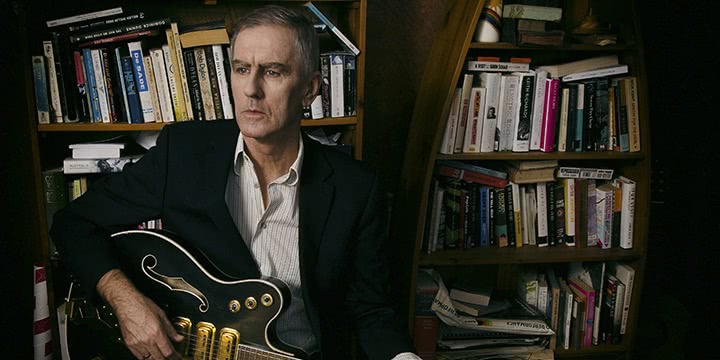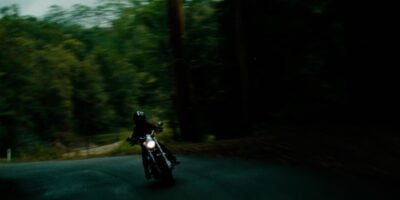It’s been seven years since Robert Forster released his last solo album,The Evangelist.
At the time, Forster was still working through the grief at the death of his long-time friend, musical partner and fellow founding member of The Go-Betweens, Grant McLennan. Sensing the need for a break to clear his head and embark on a different musical direction, Forster envisaged a gap of five years before releasing his next album. But in music, as in life, things don’t always work out to plan, and it’s taken until now for the arrival of Songs To Play.
“It was meant to be five years, but it became seven. I just wanted to have a gap in my career,” Forster explains. “I’d done The Evangelist in 2008, and I knew that that album marked the end of an era, and that whatever I did next would be a new step. I thought the best way to mark that would be the passage of time. So it was planned to be five years, but it pushed out to seven.”
Forster had written The Evangelist in the wake of McLennan’s death, with the sombre tone of many of the songs reflecting his state of mind. “That 18 months [after McLennan’s death] was quite intense,” Forster says. “I was in a very different place. I was dealing with a lot of grief, obviously – ‘fog’ is the wrong word, but a different state of mind. I was attached to these feelings, and I was attached to these particular songs. And they all spilled out on that album.”
But even while working on his last album, Forster had a strong sense of where he wanted his next release to go, and how he wanted to record it. “I wanted to work with a different producer, I didn’t want to record in England, I wanted to recorded in analogue, not Pro Tools, I wanted to work with new musicians,” he says. The change in personnel and production style would help him create songs “that maybe flew off the guitar a little bit better – that there would be a bit more upbeat material”.
In 2011, Forster assembled his supporting cast: Scott Bromiley and Luke McDonald of The John Steel Singers (whose 2010 album Tangalooma was produced by Forster), drummer Matt Piele from Forster’s touring band, and Forster’s wife Karen Bäumler on violin and vocals.
“They all contributed enormously – I really gave the album over to people,” Forster says. “Scott and Luke from The John Steel Singers especially – they’re master instrumentalists and have a great feeling for instrumentation and production ideas. When we started practising back in 2011, I had ten demos that I’d written and I just said, ‘Take them wherever you want, don’t just plonk all along a bass or guitar,’ which I knew they wouldn’t do anyway.”
Apart from the occasional live gig, Forster’s collaboration with his wife of 25 years had hitherto been limited to jamming “in the kitchen and the lounge room”.
“So it was taking these elements – a drummer who I’d been out on the road with, these two guys whose record I’d produced and my wife – it was quite an odd group of people, all of whom are quite strong. We just did it.”
With his time split between writing, performing and finalising the release of the first instalment of the Go-Betweens box set, it would take another four years before Forster reconvened his ensemble to record Songs To Play. True to Forster’s original vision, it’s an album of upbeat tracks and whimsical lyrical exploration. The opening song, ‘Learn To Burn’, has shades of Talking Heads, The Modern Lovers and Roxy Music (“I didn’t plan it that way, but I love all of those artists”), while tracks such as ‘Songwriters On The Run’ – written in Germany as a play on a news story about a couple of escaped criminals whose plight captured the German public’s fascination – reflect Forster’s deft literary touch. On ‘Let Me Imagine You’, ‘I’m So Happy For You’ and ‘Love Is Where It Is’, Forster is the romantic poet, casting a rose-coloured glance at the world and people around him.
“Personally, I guess I am [a romantic] – I’m 58 years old and I’m a practising songwriter,” Forster says. “I have to be romantic – there’s no other way for me to exist! It is a very romantic profession once you get to my age, and that’s what I’ve done.”
As a variation on a theme, Forster uses ‘I Love Myself (And I Always Have)’ to explore his own sense of self-worth, and to play with audience perceptions of the song’s title and meaning. “Every artist likes playing with the audience and their perceptions of a song, and what they think is going to happen next,” he says. “So the first two lines of the song are the song title, but then it changes, and you realise it’s not going to go off with a lot of silly one-liners, but goes off into different territory that relates to the title – so that’s what I did.”
[Robert Forster photo by Stephen Booth]
Songs To Play byRobert Forster isout Friday September 18 through EMI. Forster and his band playOxford Art Factory on Thursday November 26.


































